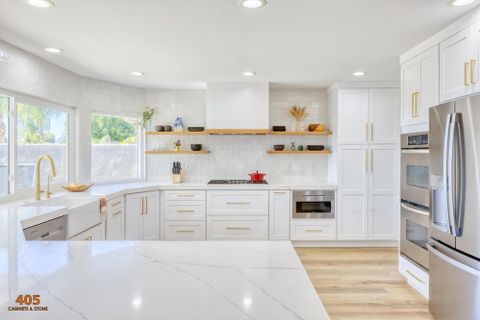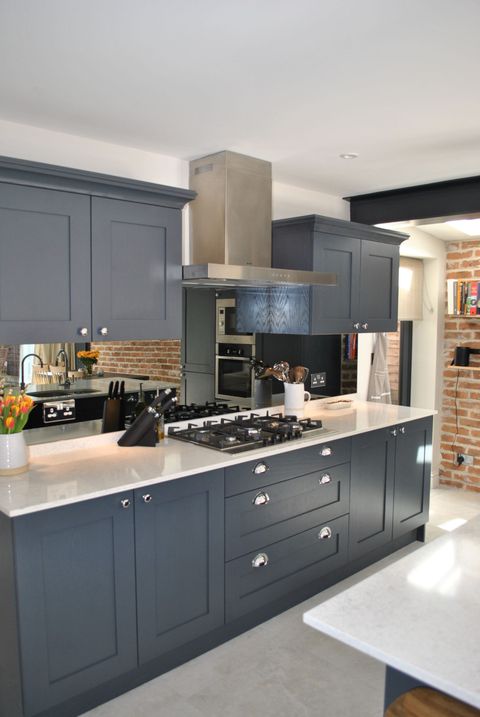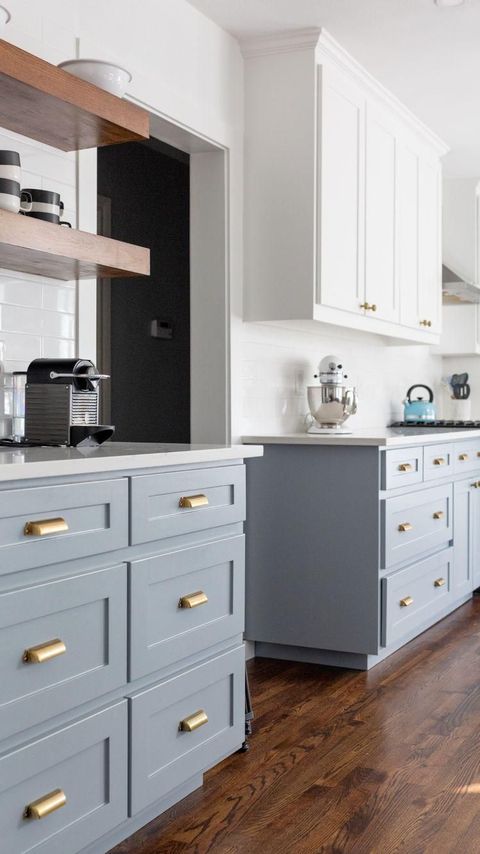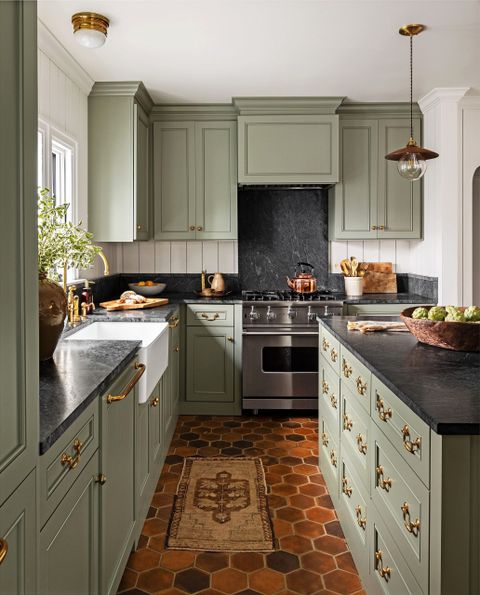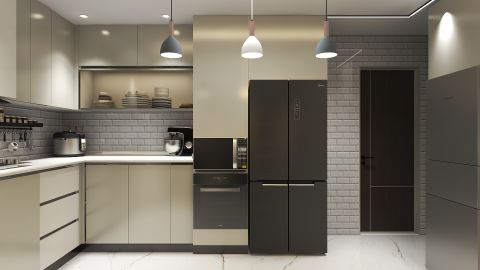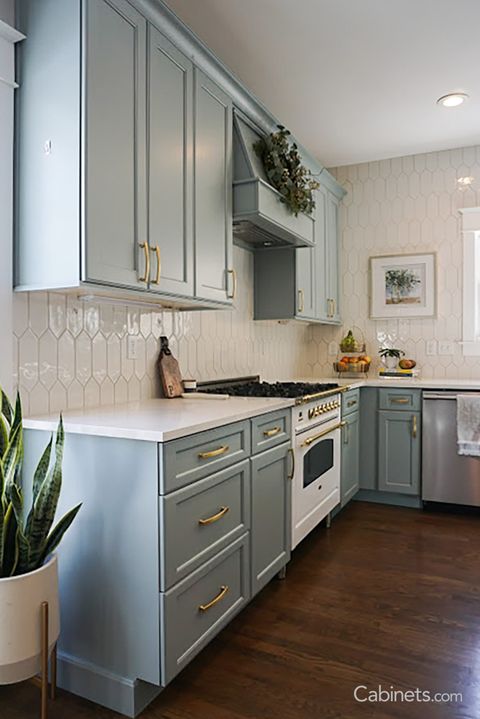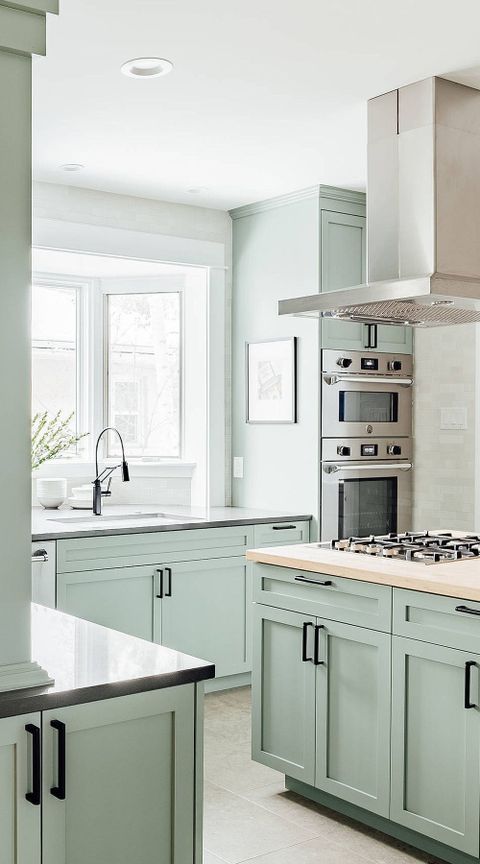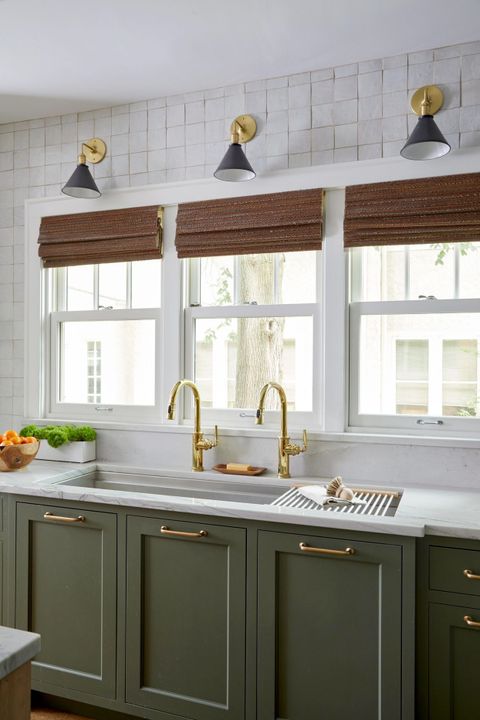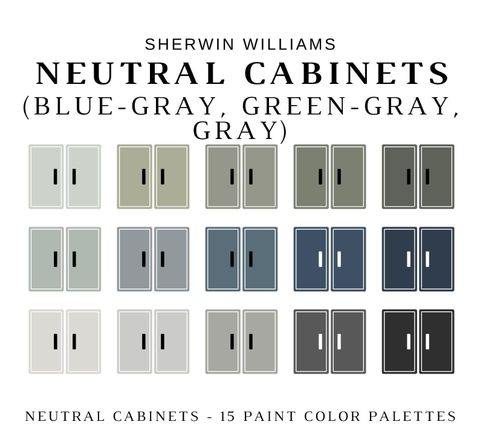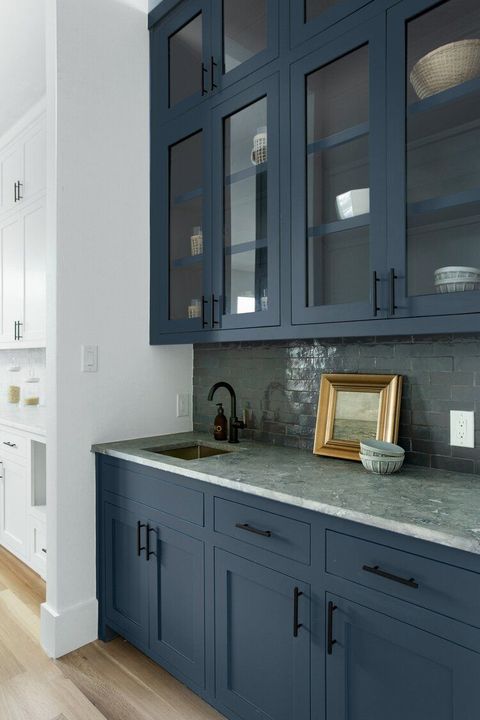For ages, "neutral" in home decor pretty much meant shades of white, beige, and maybe a muted taupe. They were safe, predictable, and frankly, a little bit boring for some. But the design world, like everything else, is always evolving. Lately, we’ve seen a significant shift, a quiet revolution in fact, where colors like blue, green, and gray are stepping out of their traditional roles and claiming the coveted title of "new neutral." It’s an exciting change, offering a depth and personality that the old guard of neutrals just couldn’t quite capture. Think about it – these colors aren’t just background players anymore; they’re becoming the stars of the show, anchoring entire rooms with their understated elegance and surprising versatility.
Remember when your kitchen cabinets had to be white, or perhaps a wood tone? It felt like the only options if you wanted something that wouldn’t clash or go out of style. But oh, how times have changed. We’re now living in an era where softer, more nuanced shades of blue, green, and gray are not just acceptable but actively sought after for cabinetry. These hues offer a sophisticated alternative, providing a calm and grounding presence without being bland. They bring a touch of nature indoors, a sense of peace, and a surprising amount of flexibility when it comes to pairing with other colors and materials. It’s less about making a bold statement and more about creating a layered, inviting atmosphere that feels both current and timeless. Let’s dive into why these colors are becoming the go-to choices for designers and homeowners alike.
The Allure of the Subtle Hue
So, what makes these colors so special? It’s their inherent subtlety. Unlike a bright, saturated color that demands attention, these shades of blue, green, and gray possess a quiet confidence. Think of a dusty, muted blue – it’s not a sky blue, nor is it navy. It’s sophisticated, like a well-worn pair of jeans or the soft color of a stormy sky. Similarly, a sage green or a mossy hue brings the calming essence of nature indoors. And gray? It’s always been a strong contender, but now we’re seeing it in warmer, more complex tones, moving away from the stark, cool grays of the past. These colors provide a beautiful backdrop, allowing other elements in the room – like countertops, backsplashes, or decor – to shine without competing for attention. They create a sense of depth and visual interest that a simple white or beige can sometimes lack.
Versatility is Key: Pairing Possibilities
One of the biggest reasons these colors are taking over is their incredible versatility. They play well with a wide range of materials and colors, making them adaptable to almost any design style. For instance, a deep, moody blue cabinet can look stunning with marble countertops and brass hardware for a touch of classic elegance. Pair it with lighter wood tones and minimalist hardware, and you’ve got a modern, Scandinavian-inspired look. Sage green cabinets create a serene atmosphere, looking fantastic with natural wood, crisp white quartz, or even a textured, earthy tile backsplash. And gray cabinets? They’re the ultimate chameleon. They can soften a space with warm wood accents, provide a sleek contrast to white or black elements, and act as a perfect canvas for vibrant pops of color in accessories. This ability to adapt and complement makes them a smart, long-term investment for your home.
Bringing the Outdoors In: Nature’s Palette
There’s a growing desire in home design to connect with nature, and these colors are perfectly suited for that. Blues and greens, in particular, are deeply rooted in the natural world. They evoke feelings of calmness, tranquility, and well-being – think of the serene expanse of the ocean or the lushness of a forest. This connection to nature creates a welcoming and restorative atmosphere in our homes, which is something many of us crave. Even the more complex grays can echo natural elements like stone or slate. Using these colors in your cabinetry is a subtle yet effective way to infuse your living space with the soothing qualities of the outdoors, creating a sanctuary that feels both grounded and refreshing. It’s about creating a home that feels good to be in, and these colors absolutely deliver on that promise.
The Psychology of Color: Calm and Collected
Beyond aesthetics, these colors have a real psychological impact. Blue is widely known for its calming and stress-reducing properties. It can create a sense of stability and peace, making it an ideal choice for a kitchen or bathroom where you might start and end your day. Green is also associated with balance, harmony, and renewal. It’s a color that promotes feelings of freshness and vitality. Gray, while sometimes seen as somber, can also be incredibly sophisticated and grounding. When used in softer, warmer tones, it provides a sense of stability and maturity without feeling overwhelming. These colors contribute to an overall feeling of serenity and order in the home, which is incredibly valuable in our often-hectic lives. They help create spaces that feel like a true retreat.
Practicality Meets Style: Durability and Timelessness
Let’s talk practicality, because even the most beautiful cabinets need to stand up to daily life. One of the advantages of these mid-tone neutrals is that they tend to hide minor scuffs and smudges better than stark white cabinets. A little bit of grime or a fingerprint is less likely to be glaringly obvious on a soft blue or a muted green. This means your kitchen or bathroom can maintain its polished look for longer between cleanings. Furthermore, because these colors are so adaptable and have a timeless quality, they are less prone to falling out of fashion compared to trendy, bright colors. Investing in these shades means you’re likely to love your cabinets for years to come, saving you the hassle and expense of frequent remodels. It’s a smart choice for both style and longevity.
Making the Switch: Tips for Incorporating New Neutrals
Ready to embrace the trend? Here are a few ideas on how to bring these new neutrals into your home. Consider a full cabinet refacing or replacement in a soft gray or a muted blue. If a complete overhaul feels too daunting, start smaller. You could opt for a painted island in a contrasting but complementary shade, like a deep teal against white perimeter cabinets. Another approach is to incorporate these colors through accent pieces – think a painted hutch, open shelving in a soft green, or even just accessories like vases or artwork. When choosing your specific shade, consider the natural light in your space and the overall color palette you’re aiming for. Don’t be afraid to get samples and see how they look in your home throughout the day. And remember, hardware and backsplash choices can dramatically alter the final feel, so experiment with different combinations to find what resonates most with you.
It’s clear that the definition of a neutral in home design has expanded, and for good reason. Blue, green, and gray cabinets offer a sophisticated, versatile, and deeply appealing alternative to the traditional whites and beiges. They bring a sense of calm, a connection to nature, and a unique personality to our homes. Whether you’re undertaking a major renovation or simply looking for a way to refresh your space, these colors provide a beautiful and enduring foundation. So, next time you’re thinking about updating your kitchen or bathroom, don’t shy away from these wonderfully complex hues. They might just be the perfect way to create a space that feels both stylishly current and wonderfully, comfortably you.
[sps_html tag=”img” src=”https://marcpauze.com/wp-content/uploads/2025/08/stylish-bluish-gray-kitchen-cabinets-for-modern-homes-transform-your-within-a-deep-dive-into-the-aesthetic-appeal-of-blue-green-and-gray-cabinets-in-modern-homes.jpg” alt=”Stylish Bluish Gray Kitchen Cabinets For Modern Homes: Transform Your … within A Deep Dive Into the Aesthetic Appeal of Blue Green and Gray Cabinets in Modern Homes” style=”width: 100%; height: auto;”]
[sps_html tag=”img” src=”https://marcpauze.com/wp-content/uploads/2025/08/the-11-best-green-paints-for-cabinets-according-to-experts-dark-with-regard-to-a-deep-dive-into-the-aesthetic-appeal-of-blue-green-and-gray-cabinets-in-modern-homes.jpg” alt=”The 11 Best Green Paints For Cabinets, According To Experts | Dark … with regard to A Deep Dive Into the Aesthetic Appeal of Blue Green and Gray Cabinets in Modern Homes” style=”width: 100%; height: auto;”]
[sps_html tag=”img” src=”https://marcpauze.com/wp-content/uploads/2025/08/34-top-green-kitchen-cabinets-good-for-kitchen-get-ideas-throughout.jpg” alt=”34+ ( Top ) Green Kitchen Cabinets - " Good For Kitchen? " Get Ideas … throughout” style=”width: 100%; height: auto;”]
[sps_html tag=”img” src=”https://marcpauze.com/wp-content/uploads/2025/08/two-tone-kitchen-cabinets-6th-ave-homes-artofit-intended-for.jpg” alt=”Two Tone Kitchen Cabinets 6Th Ave Homes – Artofit intended for” style=”width: 100%; height: auto;”]
[sps_html tag=”img” src=”https://marcpauze.com/wp-content/uploads/2025/08/country-kitchen-colours-scheme-inspirational-15-best-green-kitchen-pertaining-to.jpg” alt=”Country Kitchen Colours Scheme Inspirational 15 Best Green Kitchen … pertaining to” style=”width: 100%; height: auto;”]

